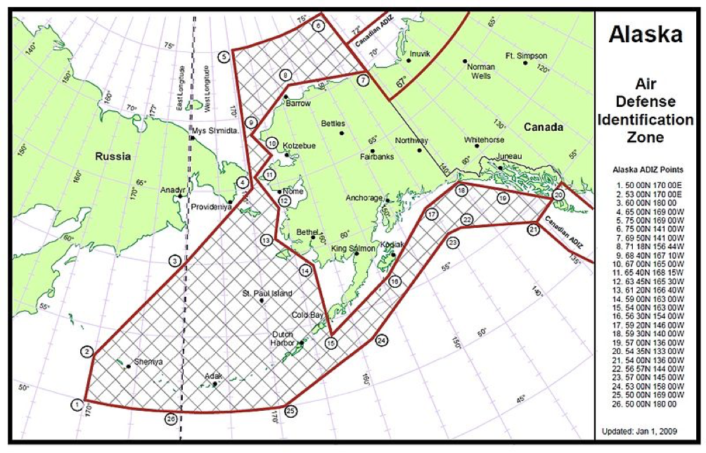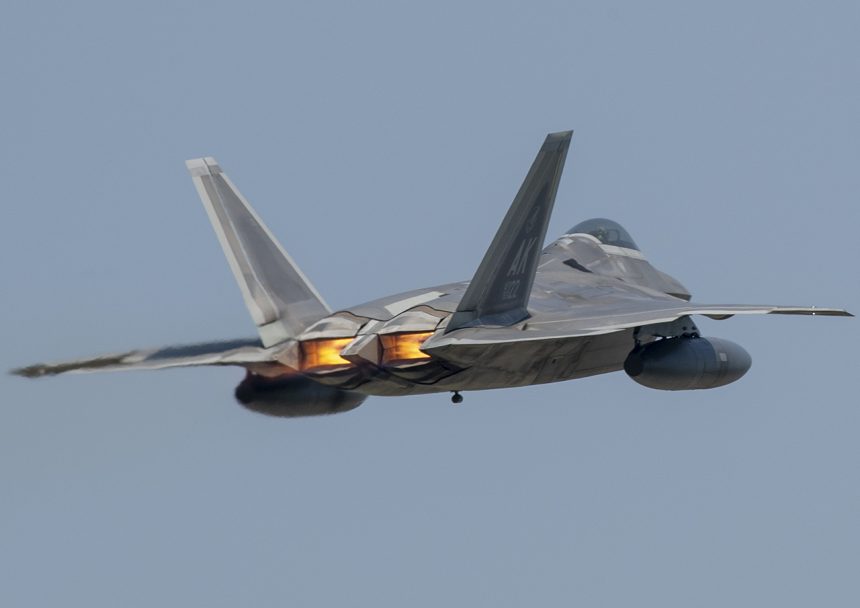A routine close encounter between Russian bombers and American stealth interceptors in the Northern Pacific Ocean.
On Sept. 1, two Russian Tu-95MS strategic bombers involved in “scheduled flights over the waters of the Arctic Ocean, the Bering and Okhotsk seas” and supported by at least one Il-78 Midas tanker were, at some stages, accompanied by U.S. Air Force F-22 fighters, Russian Defense Ministry told to journalists on Friday according to TASS news agency.
The two U.S. Air Force F-22 Raptor jets were scrambled from Joint Base Elmendorf-Richardson, Alaska to intercept and visually identify the two Bear bombers flying off Alaska, south of the Aleutian Islands and inside the ADIZ (Air Defense Identification Zone).
According to NORAD (that used a standard phrase to describe the episode), the Russians were “intercepted and monitored by the F-22s until the bombers left the ADIZ along the Aleutian Island chain heading west,” and, as usual, remained in international airspace.
The ADIZ, is a special zone, that can extend well beyond a country’s territory where aircraft without authorization may be identified as a threat and treated as an enemy aircraft, leading to an interception and VID (Visual Identification) by fighter aircraft.

Such close encounters are quite frequent and may also involve fighters, as happened in 2017, when the Bears were escorted by two Su-35S Flanker-E jets, and an A-50 AEW (Airborne Early Warning) aircraft. Anyway, this is the second time that Russian Bears pay a visit to the Alaskan ADIZ: on May 12, 2018, two F-22s were launched to perform a VID and escort two Tu-95 on a similar mission in the Northern Pacific.
It’s worth noticing that Raptors in peacetime QRA (Quick Reaction Alert) *usually* fly with external fuel tanks and Luneburg lenses/radar reflectors (clearly visible in the top image): this means that they are (consciously) visible to radars, exactly as any other QRA aircraft.
Top image: file photo an F-22 Raptor from Joint Base Elmendorf-Richardson, Alaska takes off at Yokota Air Base, Japan, Aug. 3, 2018. (U.S. Air Force photo by Yasuo Osakabe)









